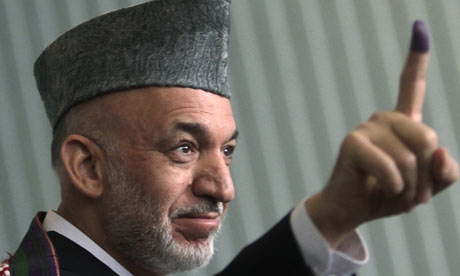 Two weeks ago, the nation of Afghanistan held its second presidential election since the U.S. invasion of the country in 2001. President Hamid Karzai was looking for another term in office against 39 other candidates, the most notable of which was Dr. Abdullah Abdullah, a ethnic Tajik who was a former foreign minister in the Afghan government. The election was seen as a measuring stick of how stable, or unstable, Afghanistan has become over the last several years.
Two weeks ago, the nation of Afghanistan held its second presidential election since the U.S. invasion of the country in 2001. President Hamid Karzai was looking for another term in office against 39 other candidates, the most notable of which was Dr. Abdullah Abdullah, a ethnic Tajik who was a former foreign minister in the Afghan government. The election was seen as a measuring stick of how stable, or unstable, Afghanistan has become over the last several years.
By most military estimates, Afghanistan is in danger of being lost. Years of ignoring the country’s internal development due to the war in Iraq have allowed warlords to continue to hold control of parts of the country and the Taliban to spread out. Areas in northern and western Afghanistan which had before been pacified by American troops and NATO forces are now under more influence from the Taliban. Afghan experts are fearing that a Taliban insurgency could become a wider rebellion against the Afghan government.
While the Afghan election result is still uncertain and it is possible that there will be a runoff in October, extempers would be wise to consider the possibilities of the result and the impact the result will have on U.S. Afghan policy, the war in Afghanistan, and the country’s internal political structure. As such, this brief will detail some crucial events in the run-up to the Afghan election, the behavior of the vote, and why it matters for Afghanistan’s future.

